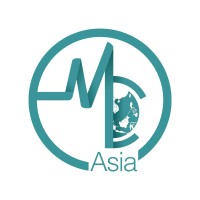How do I know if I have hypertension?
In our previous article on high blood pressure, otherwise known as hypertension (HTN), we spoke about measurement and interpretation of blood pressure (BP) readings. Your doctor can diagnose HTN by checking your blood pressure (BP), using an inflated upper arm cuff with a gauge. For the most accurate BP readings:
- Sit very still with your ankles and legs uncrossed
- Relax your arm while they measure your BP
What are the different stages of hypertension?
Here are the different BP readings for a normal patient vs other stages of HTN:
| BP Category | SYSTOLIC (mm Hg) | and/or | DIASTOLIC (mm Hg) | Remarks |
| NORMAL | <120 | and | <80 |
|
| ELEVATED (PRE-HTN) | 120-129 | and | <80 | |
| HIGH BLOOD PRESSURE (STAGE 1 HTN) | 130-139 | or | 80-89 |
|
| HIGH BLOOD PRESSURE (STAGE 2 HTN) | ≥140 | or | ≥90 |
|
| HYPERTENSIVE CRISIS | >180 | and/or | >120 |
|
Table 1: Interpretation of Blood Pressure Readings (Source: American Heart Association)
Causes of Hypertension
Besides staging, hypertension can also be classified as Primary Hypertension or Secondary Hypertension based on the cause(s).
Primary hypertension
This is also known as essential hypertension. Most adults with hypertension are in this category.
There is no specific cause for primary hypertension. It is often a combination of genetics, age, diet, and lifestyle factors e.g. smoking, drinking, stress, being overweight, insufficient exercise.
Secondary hypertension
Secondary hypertension is when there is an identifiable and usually reversible cause of your Hypertension. It is more prevalent in younger people. An estimated 30% of those ages 18 to 40 with hypertension have secondary hypertension.
The underlying causes for secondary hypertension include:
- Narrowing of the arteries that supply blood to the kidneys
- Adrenal gland disease
- Side effects of some medications, including birth control pills, diet aids, stimulants, antidepressants, and some over-the-counter painkillers
- Obstructive sleep apnea
- Hormone abnormalities
- Thyroid abnormalities
- Constriction of the aorta
7 tips to manage and prevent hypertension
Acquiring healthy lifestyle habits will help keep your blood pressure in a healthy range, lowering your risk for heart disease and stroke. Some beneficial measures include:
1. Heart-healthy diet
- Eat more fruits, vegetables, whole grains;
- Opt for low-fat or fat-free dairy products;
- Limit foods that are high in saturated fat or cholesterol (e.g. choose white meat and fish over red meat);
- Limit sodium intake (<2300mg of sodium daily). Even a small reduction in the sodium in your diet can reduce blood pressure by about 5 to 6 mm Hg.
- Limit sugary foods and drinks.
2. Weight management
Being overweight increases your risk for high blood pressure. Calculate your BMI, and discuss with your doctor on how to reach a healthy weight. In general, you may reduce your blood pressure by about 1 mmHg with each kilogram of weight you lose.
Carrying excessive weight around the waist can also predispose to high blood pressure:
- Men are at risk if their waist measurement is > 40 inches (102 centimetres).
- Women are at risk if their waist measurement is > 35 inches (89 centimetres).
Overall, shedding weight will be beneficial in managing blood pressure.
3. Exercise regularly
Exercise will help keep you at a healthy weight and lower your blood pressure. Regular physical activity — such as 150 minutes a week, or about 30 minutes most days of the week — can lower your blood pressure by about 5 to 8 mm Hg if you have high blood pressure. Aim to do a combination of aerobic exercises (e.g. walking, jogging, swimming, cycling) and strength-training (e.g. lifting of suitable weights, body-weight squats).
4. Quit smoking
If you are a smoker, you should quit as smoking will increase your risk of heart attack and stroke.
5. Drink less alcohol
Alcohol can raise your blood pressure if consumed excessively. Men should limit themselves to 2 alcoholic drinks a day, and women at most 1 alcoholic drink a day.
6. Get enough sleep
It’s important to get at least 7-8 hours of sleep a night. During normal sleep, your blood pressure will go down. Having insufficient sleep will increase blood pressure levels.
7. Reduce stress/learn how to cope with stress
Chronic stress can cause elevated blood pressure. Eliminate stressors where possible, or readjust expectations, and make time to relax or do activities you enjoy.
If lifestyle changes are inadequate, there is a variety of prescription medications that can treat hypertension. In our next article, we discuss the different types of medication treatments available for hypertension.













